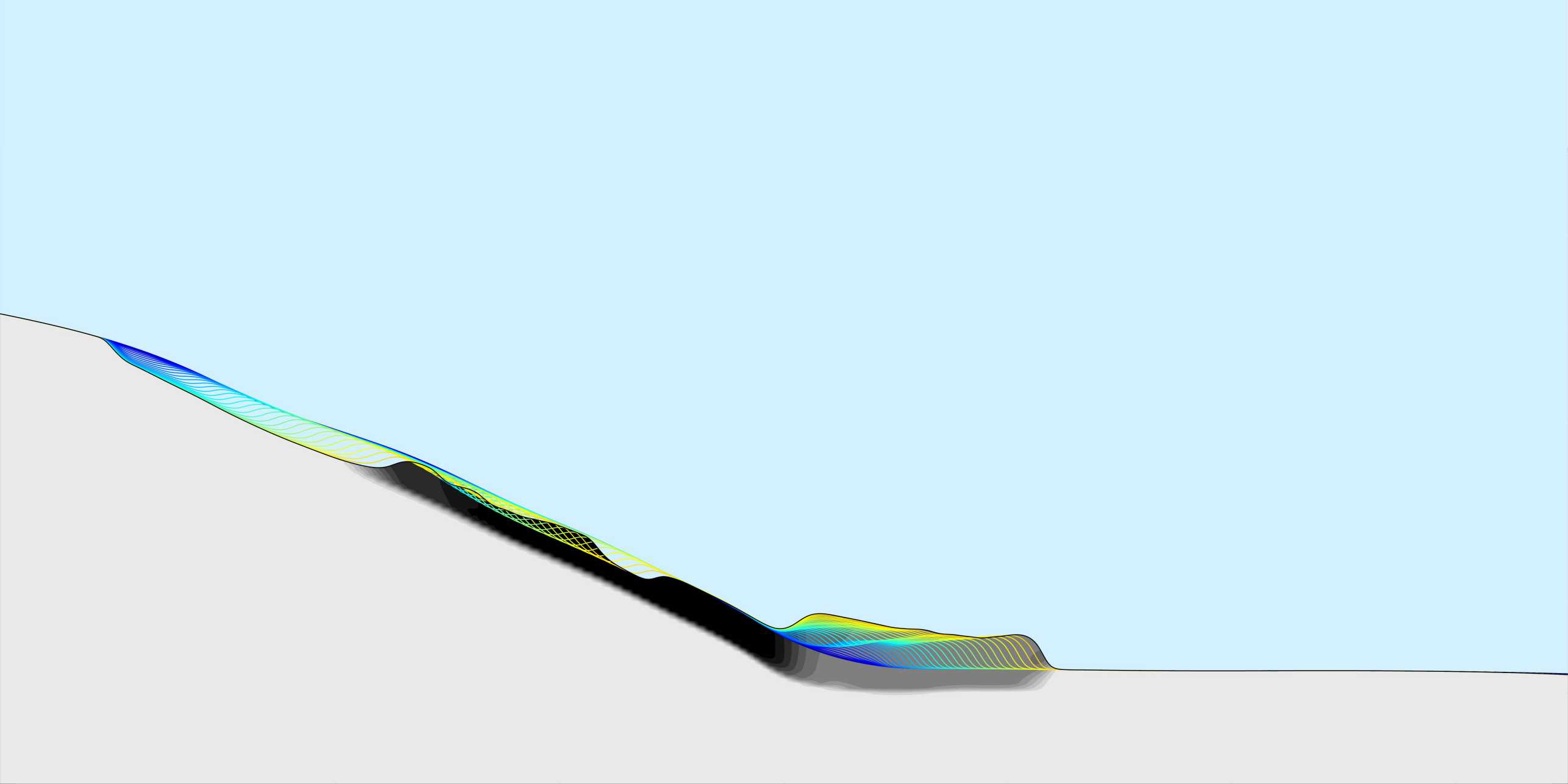Pre-conditioning and seismic triggering of submarine landslides
2014 -
This project is part of a larger research effort in this group to develop a framework for the assessment of submarine landslide evolution. The goal of this subproject is to gain an improved understanding of pre-failure processes, which lead to the initiation of large, catastrophic slope failures.
Submarine landslides are commonly associated with the presence of excess pore water pressures. These can arise from long-term processes, such as rapid sedimentation, or short-term events, such as earthquakes. This project is focused on the questions how excess pore water pressures are generated and how this can lead to the nucleation of shear bands and, eventually, the catastrophic failure of slopes. The deposition of sediments on slopes, the seismic triggering of slope failures and their post-failure evolution are modelled in a sequence of steps within a consistent framework. This allows for the simulation of the entire landslide evolution as a continuous process and for the investigation of the effects of pre-conditioning by rapid sedimentation and seismic loading on the landslide behaviour. The moving boundary between the moving soil mass and the water can be extracted and serve as source input for tsunami propagation modelling.
Researcher
Dr. Andreas Stöcklin
Publications
Contact
Professur für Geotechnik
Stefano-Franscini-Platz 5
8093
Zürich
Switzerland


